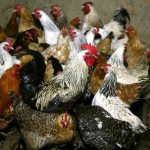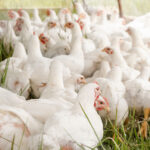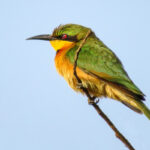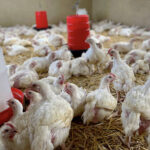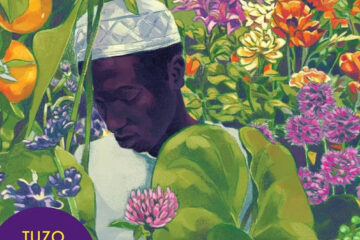101 Curious Tales of East African Birds is a new book that uses academic research to tell fascinating stories about the tropical birds of East Africa, from well-known species to rare ones. It also explores changing bird behaviour in the region. Its author, Colin Beale, studies shifts in the distribution of birds and other animals. We asked him four questions.

Why is it important to study birds and their environment?
Like millions of people around the world, I love watching birds. They’re so accessible, and their busy lives brighten up pretty much anywhere from a city centre to remote wilderness landscapes. And the more I watch them, the more curious I get about their lives and the adaptations that help them survive.
It is easy to see this as pure indulgence, the study of ornithology as a pastime of the rich in a time when most of the world still struggles with basic needs. But I see birds and birdwatching as a gateway drug to ecology, and ecology is the science that can help us tackle the biodiversity crisis that threatens life on Earth today.
Hearing that the rufous-tailed weaver had expanded its distribution from Tanzania into Kenya set me on a path that led first to identify much wider distribution changes in East African birds, then to link this to changing rainfall patterns.
Next, I took a leap into research projects seeking to understand how fire affects bird diversity and may help mitigate changes in grassland quality. Ultimately I was working with pastoralist communities of northern Tanzania to restore rangelands degraded by climate change and inappropriate grazing regimes.
Studying birds is not only good for your own mental and physical health, but can lead to valuable action on environmental challenges.
What sets East Africa’s birds apart?
The combination of extraordinary diversity, stunning colours and relatively high visibility makes the birds of East Africa a particular delight. With about 1,500 species in the region (more than 1,000 in Tanzania alone) the diversity is nearly overwhelming. Sit and watch a single bunch of flowering bushes and you could easily see five or six exquisitely plumaged sunbird species come and feed on them.
While several South American regions have slightly higher diversity than East Africa, the visibility in East African savannahs makes birding so rewarding. The birds also have an incredible variety of lifestyles, with certain behaviours such as social breeding much more common in drier tropical areas than elsewhere. I’m always finding new ways for birds to make a living.
An additional part of my fascination is the relative lack of research on East African birds. While a few species have been very well studied, there are still many species for which we don’t know the answers to basic questions, such as where and when they nest.
What are the most intriguing bird stories you have recorded?
The stories I enjoy sharing the most are the ones that either illustrate a piece of ecology that surprises or describe an extreme evolutionary oddity.
For example, I love sharing how Temminck’s coursers, a beautiful cream and apricot ground bird with smart black and white highlights, are adapted to burnt landscapes. So many people consider wildfires destructive and bad. For many visitors to East Africa’s protected areas, discovering that rangers deliberately set fires is shocking. But these are ecosystems that have co-evolved with hominids, and our ancestors have been setting fires in savannahs for longer than almost all the species have existed.
Fire-dependent species like Temminck’s courser arrive while fires are still burning, set up territories and nest on bare, burnt earth. Their eggs and chicks are blackish to maximise camouflage, fully reliant on this human-derived landscape. This is testament to our ongoing role in maintaining savannahs.
Consider too the evolutionary processes that led to ostrich males fighting over and stealing each other’s chicks. This apparently strange behaviour makes perfect sense when you realise that feeding more chicks costs ostriches nothing as they feed themselves, but surrounding your own brood with a larger flock of tasty chicks means that hungry predators are less likely to eat your offspring. The more we know about birds, the more questions we uncover.
Why do your findings matter, and for whom?
My original aim in collating these stories was to share some of the fascination and joy that I take from learning about east African birds and to bring them in an accessible way to a wider audience. I originally started researching these stories to provide safari guides with more information to share with their clients when they’re bored with yet another sleeping lion, but it soon became clear the audience was wider.
I passionately believe that the more someone knows about birds the more they enjoy them and, hopefully, the more likely they are to take actions that protect them and the environments they depend upon.
I don’t think the science I describe is always of particular importance, but hopefully, the curious tales that are collected inspire more people to take notice of the birds around them. There is no doubt in my mind that we need more people who care, or the biodiversity crisis that the world is facing will continue unabated. If you like wildlife, if you like birds or even if you just want to spend some time thinking about something other than the news, I hope you might enjoy this collection of scientific tales and perhaps be galvanised to take some action to protect the natural world we all depend upon.
101 Curious Tales of East African Birds is published by Pelagic (2023; pp224)
Main Image by Vicki Hamilton from Pixabay


